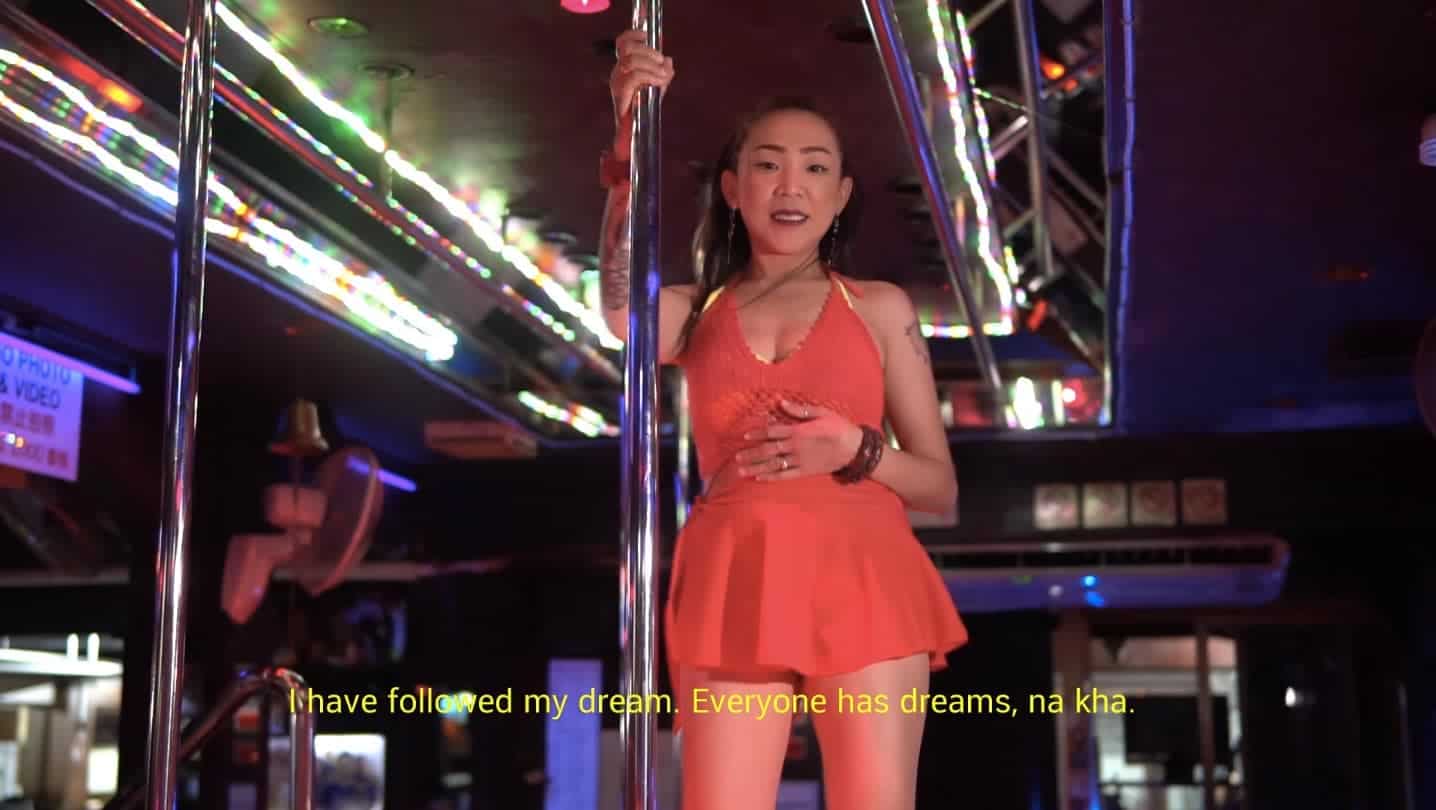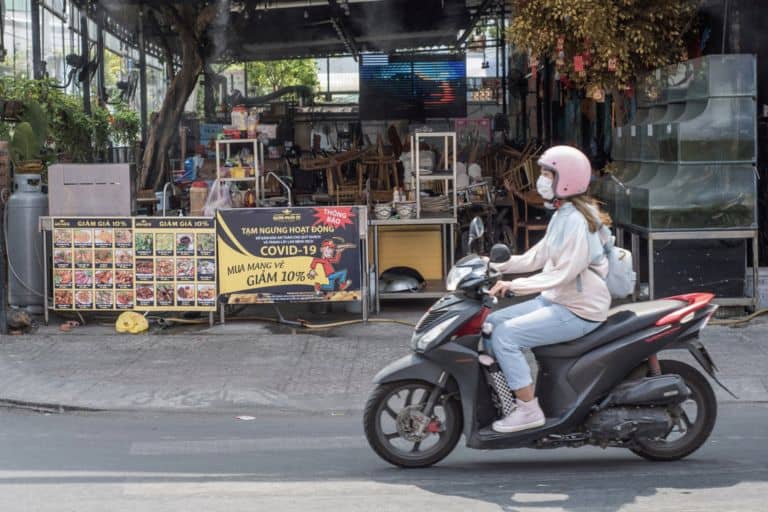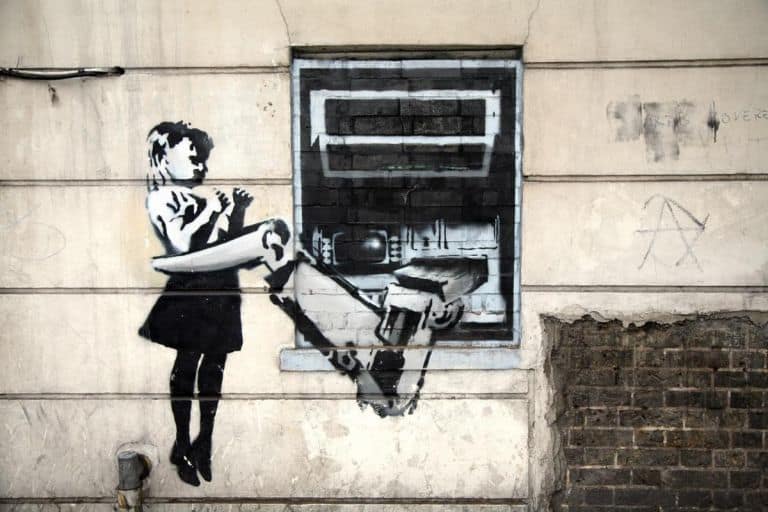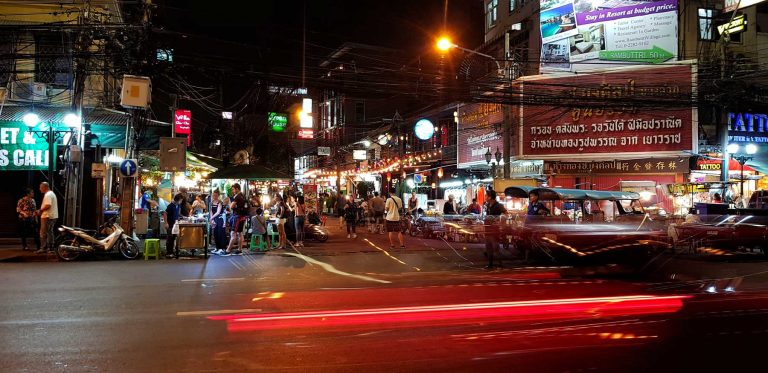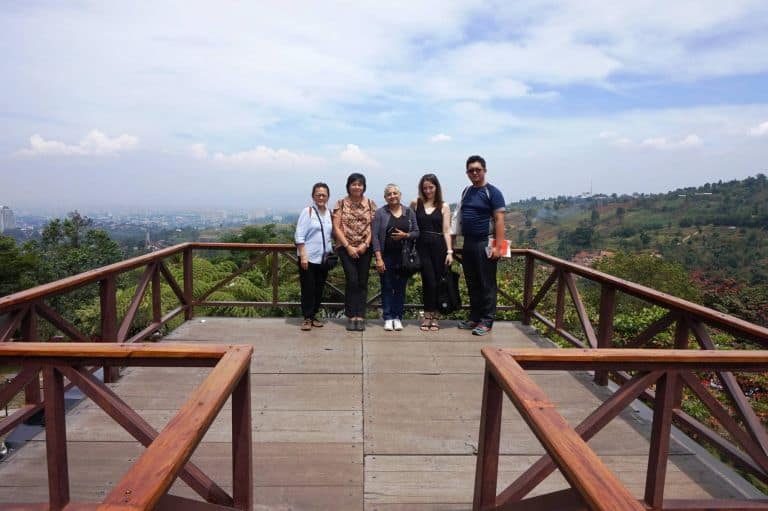I’ve often felt a self-consciousness when watching video or moving image art in a gallery setting. Even when entering dark screening rooms, there was always for me a sense of needing to perform adequate attention: my posture, the seriousness of my gaze, the depth of my contemplation. Moving image art of all types have moved and bored me in equal measure. Admittedly, it is what I’m most likely to skip in an exhibition.
The thing is, I unselfconsciously watch videos every day. My first act every morning is to stop myself from opening the Instagram app and clicking the first purple-orange gradient framed circle that I see. A slideshow of short, often contextless images, videos, ads, and captions invariably wash over me like a minor blackout. I watch nearly hourlong video essays on culture, process videos showcasing the restoration of an old painting, or the making of a lathe-turned wooden bowl, cooking videos, DIY tutorials, vlogs, lengthy ASMR roleplays, live music performances – on a daily basis.
In a gallery or museum space, I usually do not have control over the work. With moving image art, I submit to its timing, pace, conditions. I submit to and engage with the experience and surroundings curated for me as an audience member. What happens then, when a video art festival moves online, and the conditions of my engagement with the moving art are entirely mine to control?
The inaugural A+ Online Festival of Video Art gives audiences such as myself the opportunity to explore this question as we navigate its online-only programme. Available online from 1 August to 12 September, A+ hopes to highlight video art for general audiences and collectors, especially in Southeast Asia. It is curated by Au Sow Yee, Marc Gloede, Ray Langenbach and Trương Quế Chi and convened by Lee Weng Choy. Most of the videos mentioned below were available for viewing on the festival website earlier this month.
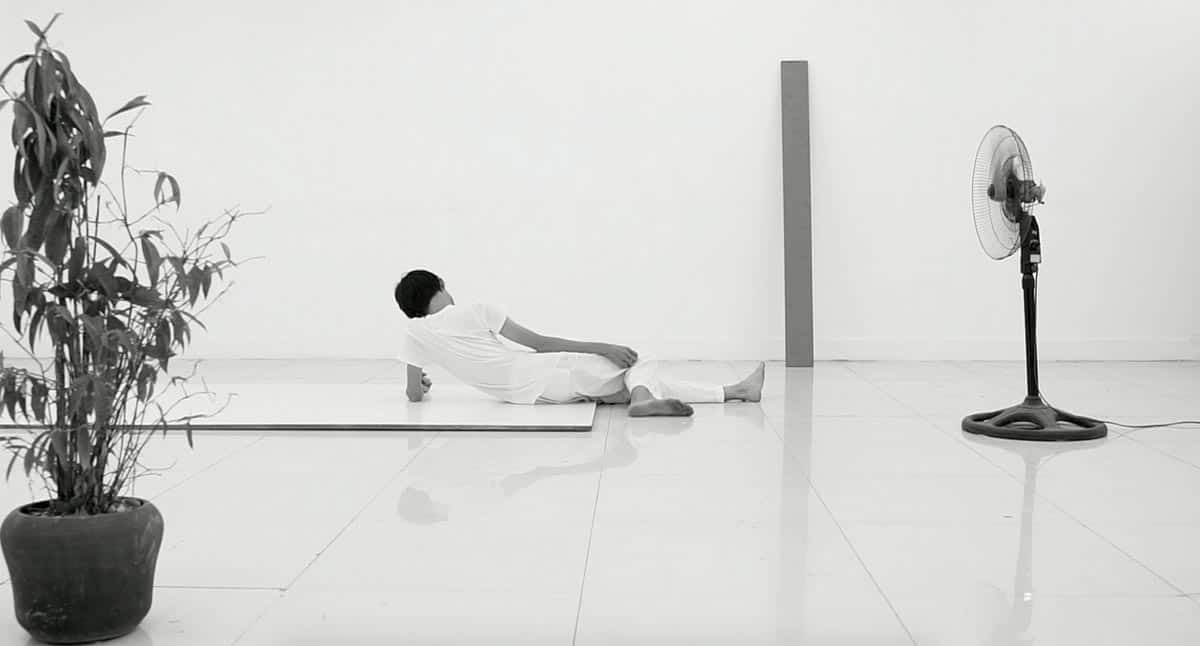
With an online festival, I curate the experience myself – my state of dress, my surroundings, my posture, my level of attention. I rewind and pause Trương Quế Chi’s Cuộc sống ở đây / Life is here to catch the figure on screen flinching as a hurled tennis ball narrowly misses their body.
I can’t imagine watching all 8 hours of KIM’s Skin Time in a gallery or in my own home, but I now have the option to experience the work in its entirety as I go about my regular day. I now have the choice to open another tab while I watch these videos, to watch them as I make a snack in the kitchen, to treat video art like any of the tens of clips and videos I watch in a day – I lose any sense of reverence that seems imposed on me (or that I impose on myself) in a gallery space, and that can feel quite freeing.
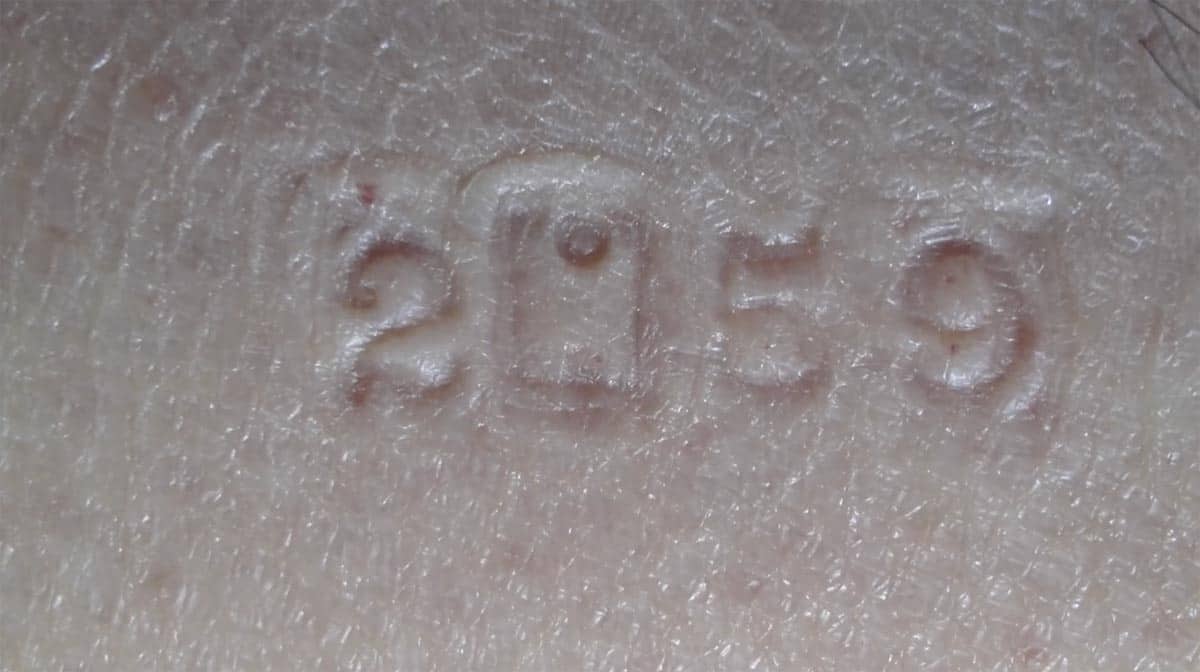
This may not be what the artists had in mind when they made and presented the work. I’m aware that my scattershot approach to viewing videos is a symptom of an attention span corroded by my online habits. But for moving image art to live online, it has to contend with the other things that make up that landscape. In an interview with BFM on challenges faced by visual artists during the COVID-19 pandemic, artist Rupa Subramaniam spoke about the difference between exhibiting work in a physical space compared to doing so online, where artists have to compete with other content creators and content platforms like Netflix and YouTube. The proliferation of multiple screens results in a loss of focus as well as a loss of the feeling of being “transported” by a curated art experience. In the same interview, artist Sharon Chin lamented how consuming content online can tire her.
There’s a fragmentary nature that already seems inherent in moving image art; I’ve often encountered video art as archival documentation of past performances, documentation of research and art-making process, overlay, installation, immersive experience, a way to carve up, divide, sculpt space. The loss of physical encounters and physical space can be seen as a loss to moving image art. Screens and devices are limited in the scope of what they can convey of moving image art; we lose that feeling of immersion, the multi-dimensionality of when video and space interacts, the impact of large-scale projections.
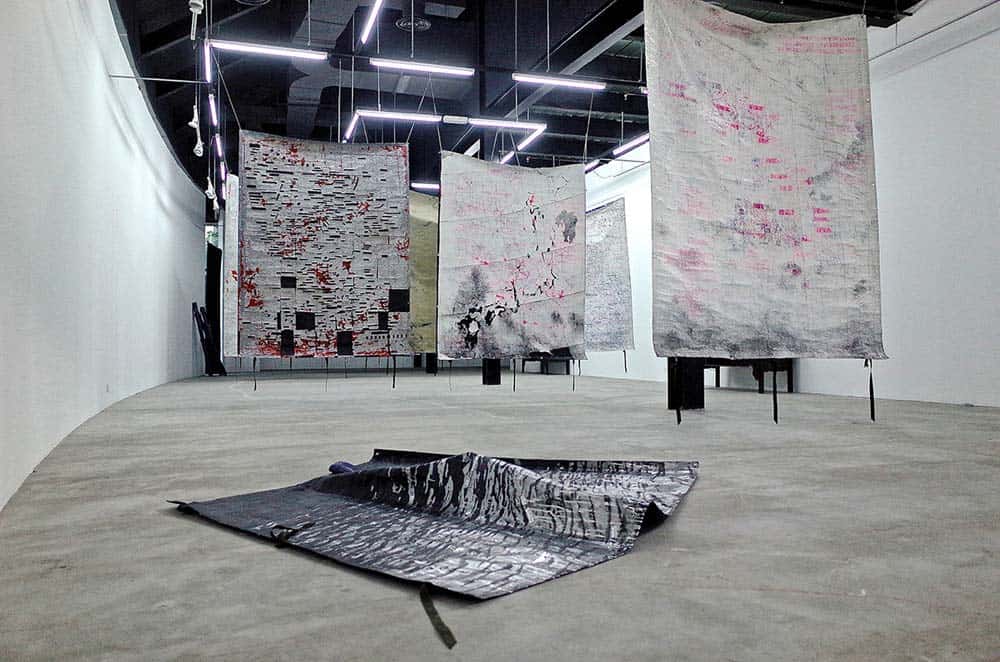
I remember going for Be Careful or You May Become the Centre, an exhibition of Chong Kim Chiew’s works at Wei-Ling Contemporary in 2015, where a video was projected of a piece of tarp shown in different locations. I watched it while surrounded by other tarps on which the artist had drawn and added to, the artworks hanging from the ceiling of the stark minimalist gallery. My experience of video art is often one of grappling with how they seem to marry ineffable meaninglessness and deep meaning (that I don’t always feel I understand). I did not connect with the video on its own but coupled with the space, the other works, seeing and being with the tarps in person – it all came together as one large multifaceted impression.
Similarly, watching Orawan Arunrak’s War Journey, Okinawa on its own evoked a feeling of being with the artist on the journey she undertook with her godfather’s military jacket; the ambient noise she heard, the things and people she saw, the steps she walked. In a pre-COVID-19 world, perhaps I would have watched this in the same space as the jacket itself, and would have been able to see up close the golden thread that I watched her stitch in the video.
Is this just a yearning for the physical borne from the recent experience of social distancing, lockdowns and quarantines? One of the most viral pieces of video art I’ve seen during the pandemic is built entirely on the premise of seeing through other people’s windows; being able to be transported to an elsewhere that we can’t access in real life.
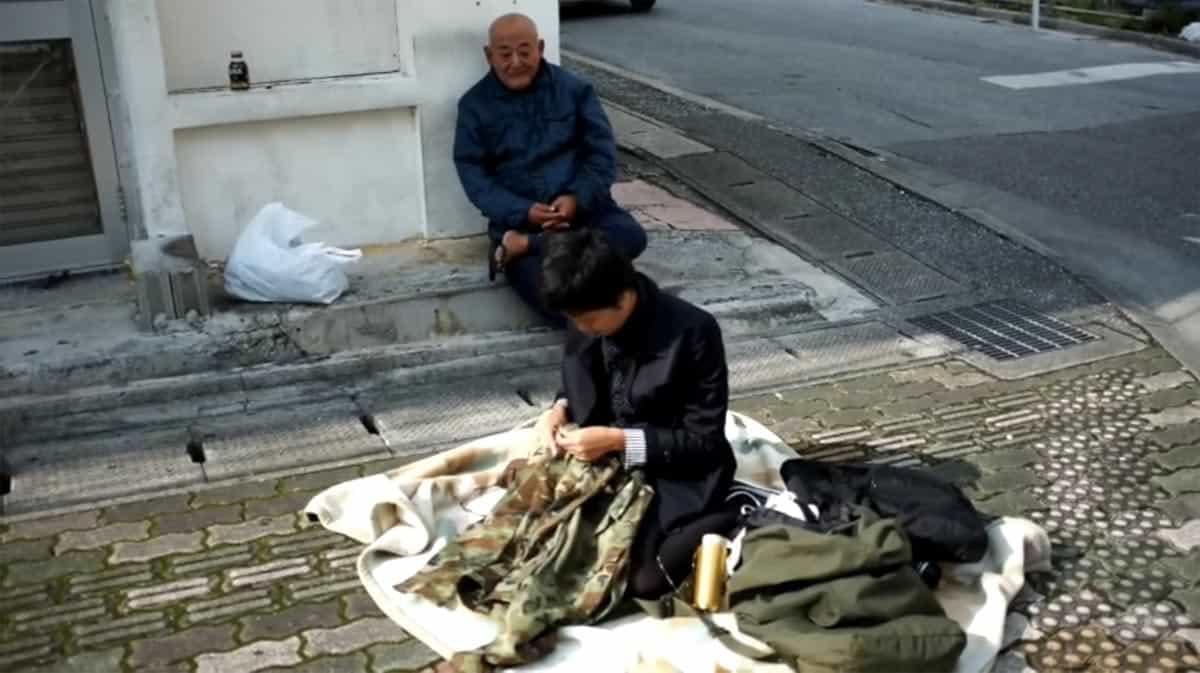
How video or moving image art, cinema, and experimental film is defined and differentiated is constantly debated. In a video titled The Case for Video Art, The Art Assignment asserts that “Art and film have always been intertwined, without clear boundaries dividing them” – they are in active dialogue with one another. For example, Au Sow Yee’s Pak Tai Foto, Posak Jodian’s Lakec, Ho Rui An’s Student Bodies, and Chumpon Apisuk’s I HAVE DREAMS featured in the festival all utilise documentary filmmaking conventions.
Watching them, I get stories and perspectives about places I’ve never been to and communities I didn’t know about before, like the indigenous Amis in Taiwan or sex workers in Chiangmai. Perhaps the most consistent difference between what we understand as cinema and video art is commercial and mass market appeal. Often these works are seen as too small or niche to be given slots on larger platforms, and so it falls to small black boxes, festivals, galleries, and other specialised platforms to broadcast them. The A+ Online Festival then becomes a site of discovery, a site for alternatives to the mainstream.
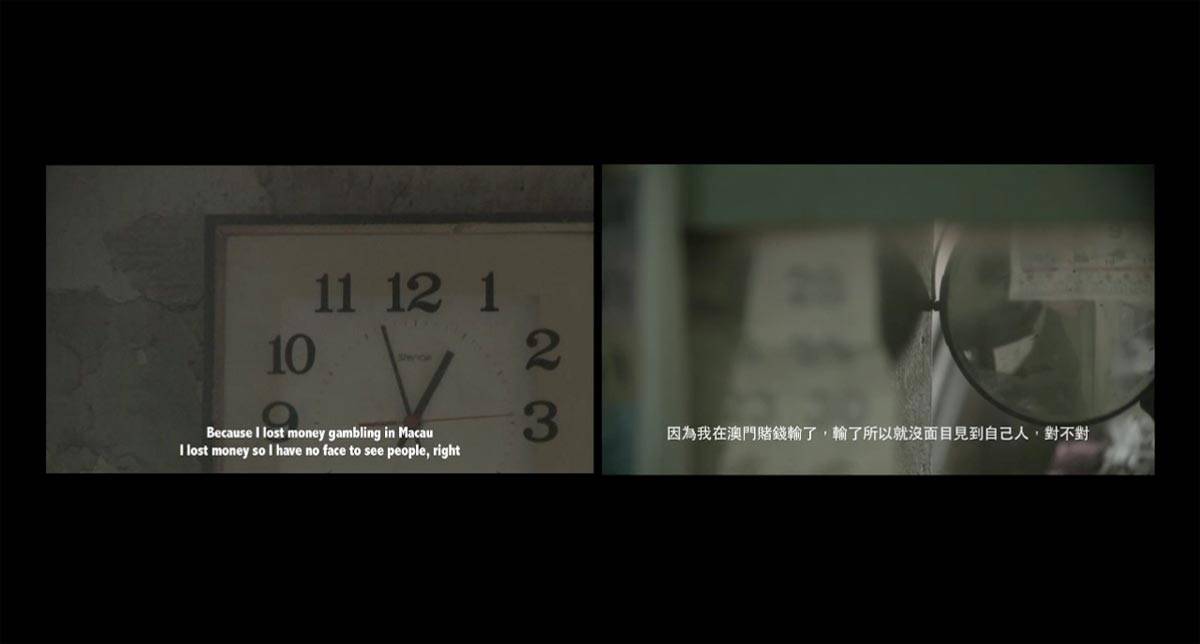
Without minimising the mental, emotional and financial impact of these unprecedented times, the challenges of engagement, attention and accessibility with regards to video art are not so different to what artists and art spaces contended with pre-pandemic. The tools and parameters differ slightly, but the space to innovate and be challenged remains the same. Malaysian artists like Kamal Sabran, Okui Lala and others have been making video art for a long time. The Kuala Lumpur Experimental Film, Video, and Music Festival has been going since 2010. It will be interesting to see how curators and art mediators can curate online spaces to feature moving image art in more accessible and dynamic ways, in ways that set these curations apart from the familiar formats of YouTube and Vimeo to reach new audiences. It will also be curious to see if artists can bring video art out into the physical world despite current restrictions; an example that comes to mind is Jenny Holzer’s projection of George Floyd’s last words on the side of a building in New York.
There can be a sense that what was once offline that is now online is a shadow of the “real” thing; offering half experiences that try their best to mimic the visceral impact of physical encounters. My question as an art supporter, audience member and creator is how can we create and engage in online experiences without FOMO built in, with and not against the terms of our current conditions, without sacrificing human connection, with full celebration of the tools we use and the possibilities they open up? Let’s click record, edit, play, and see.
____________________________
A+ Online Festival of Video Art is ongoing until 12 September 2020, and the works can be viewed online by registration. For more information, visit their website here.
Feature image: Video still from Chumpon Apisuk’s I HAVE DREAMS, 2018. Image courtesy of A+ Online Festival for Video Art.
